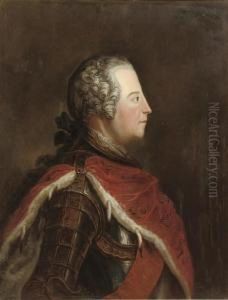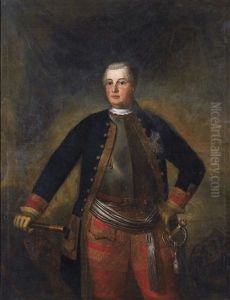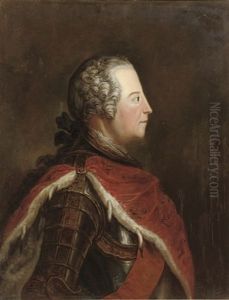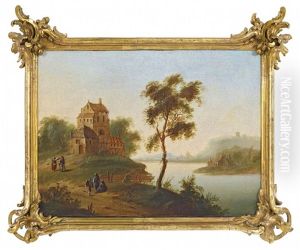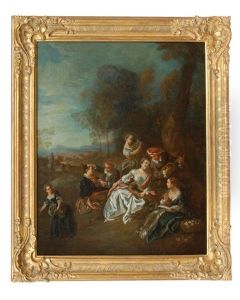Georg Wenzeslaus Von Knobelsdorff Paintings
Georg Wenzeslaus von Knobelsdorff was a German painter and architect within the Baroque and Rococo periods, known for his significant influence on Prussian architecture and his role in the aesthetic development of Berlin and Potsdam. Born on February 17, 1699, in Kuckädel, Lower Silesia (now part of Poland), he originated from a noble family and initially embarked on a military career before pivoting to the arts.
Knobelsdorff's artistic journey began after an injury in the military, which allowed him to pursue his interests in painting and architecture. He traveled extensively through France and Italy to study art, a common practice among artists of his stature at that time. This exposure to various cultural influences greatly informed his architectural style.
In 1735, Knobelsdorff was appointed as the court architect to Frederick the Great of Prussia, which marked the beginning of his most productive period. His relationship with Frederick the Great was instrumental in the development of his career. He played a key role in the design and construction of the Sanssouci Palace in Potsdam, which remains one of his most famous works and a prime example of Rococo architecture in Germany. The palace's design reflects Frederick the Great's desire for a private residence where he could relax away from the pomp and ceremony of Berlin.
Knobelsdorff's architectural works include the renovation of the Berlin City Palace and the design of the State Opera House on Unter den Linden, which was the first freestanding opera house in Berlin and reflected the grandeur and scale of Prussian ambitions. His work often involved a harmonious blend of architecture, interior design, and landscape, creating a total work of art that was both functional and aesthetically pleasing.
His contribution to the arts also extended to painting, although he is predominantly remembered for his architectural endeavors. Knobelsdorff's paintings often depicted architectural capriccios and landscapes, reflecting his deep understanding of space and form. Unfortunately, many of his paintings have not survived or have been overshadowed by his architectural achievements.
Georg Wenzeslaus von Knobelsdorff died on September 9, 1753, in Berlin, leaving behind a legacy as a pioneer of the early neoclassical style in Germany and a key figure in the development of 18th-century Prussian architecture. His vision and designs continued to influence European architecture long after his death.
